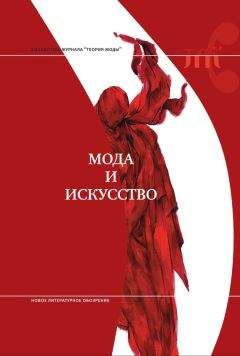233
Франсуа-Андре Венсан. Баронесса Шалве Сувиль. 1793. Лувр, Париж.
Франсуа Жерар. Портрет Александрины Эмили Броньяр. 1801. Частное собрание; Источник: La Décade philosophique littéraire et politique. 10 brumaire an IV – 2e Trimestre. P. 210. Перевод мой. Сначала я обнаружила часть этой цитаты в: Halliday T. Facing the Public. Manchester, 1999. P 53.
La Décade philosophique, littéraire et politique. An XI – Ier Trimestre. P. 107. Цит. по: Oppenheimer M. Three Newly Identified Paintings by Marie-Guillemine Benoist // Metropolitan Museum Journal. 1996. No. 31. Pp. 146–147.
P.Ch. Gravure. L’amour et Psyché, Tableau de Gérard, gravé par Godefroy // Journal des arts, de literature et de commerce. 20 Prarial an 10. No. 208. P. 366.
Lajer-Burcharth E. Necklines. New Haven, CT, 1999. Pp. 280, 283, 284.
Martin M. Selling Beauty. Baltimore, MD, 2009. P. 126.
Palmer C. Brazen Cheek: Face-Painters in Late Eighteenth-Century England // Oxford Art Journal. 2008. No. 31. P. 198; Martin M. Selling Beauty. Baltimore, MD, 2009. Chap. 6.
Garb T. The Painted Face. New Haven, CT, 2007. P. 9.
Гарб приводит примеры критики изображения кожи у Мэри Кассат. Garb T. Op. cit. P. 10.
Цит. по: Kessler M.R. Sheer Presence: The Veil in Manet’s Paris. Minneapolis, 2006. P. 37.
Becker H. Art Worlds. Berkeley, CA, 1982.
Ibid.
Shapiro R. The Aesthetics of Institutionalisation: Breakdancing in France // The Journal of Arts Management, Law and Society. 2004. No. 33. Pp. 316–335.
Becker H. Op. cit.
Kawamura Y. Fashion-ology: An Introduction to Fashion Studies. Oxford, 2005. P. 53. См. также: Mora E. Collective Production of Creativity in the Italian Fashion System // Poetics. 2006. No. 34. Pp. 334–353.
Kawamura Y. Op. cit. P. 51.
Entwistle J. The Aesthetic Economy: The Production of Value in the Field of Fashion Modelling // Journal of Consumer Culture. 2002. No. 2 (3). P. 319.
Heinich N. La sociologie de l’art. Paris, 2001. P. 65.
Wollen P. et al. Addressing the Century: 100 Years of Art and Fashion. London, 1998.
Becker H. Op. cit.
Milbank C. Couture: The Great Designers. N.Y., 1985. P. 163.
Kawamura Y. The Japanese Revolution in Paris Fashion. Oxford, 2004. P. 44.
Sudjic D. Rei Kawakubo and Comme des Garçons. N.Y., 1990.
Martin R. Fashion and Surrealism. N.Y., 1987.
Delbourg-Delphis M. La mode pour la vie. Paris, 1983.
Martin R. Op. cit.
Crane D. Fashion and Its Social Agendas: Class, Gender and Identity in Clothing. Chicago: University of Chicago Press, 2000.
Kawamura Y. The Japanese Revolution in Paris Fashion. P. 130. См. также: Crane D. The Transformation of the Avant-Garde: The New York Art World, 1940-1985. Chicago, 1987. P. 14.
Evans C. Fashion at the Edge. New Haven, CT: Yale University Press, 2003.
Benjamin W. The Work of Art in the Age of Mechanical Reproduction // Illuminations / Ed. Hannah Arendt, trans. H. John. N.Y.: Schocken Books, 1969. Pp. 291–353.
Evans C. Fashion at the Edge. P. 70.
Kamitsis L. Paco Rabanne: les sens de la recherche [A Feeling for Research]. Paris: Editions Michel Lafon, 1996. Pp. 7, 50.
McDowell C. McDowell’s Directory of Twentieth Century Fashion. London: Frederick Muller, 1987. P. 226.
Kawamura Y. Op. cit. The Japanese Revolution in Paris Fashion. P. 141.
Sudjic C. Op. cit. P. Rei Kawakubo and Comme des Garçons, 11.
Holborn M. Issey Miyake. Cologne: Taschen, 1995. P. 22.
Ibid. P. 50.
Ibid. Pp. 78, 104.
Huckbody J. John Galliano / La mode aujourd’hui / Ed. T. Jones and S. Rushton. Paris, 2006. P. 68. Курсив мой.
Lipovetsky G. L’empire de l’éphémère. [The Empire of Fashion] Paris: Gallimard, 1987 (Липовецкий Ж. Империя эфемерного. Мода и ее судьба в современном обществе. М.: Новое литературное обозрение, 2012).
Shapiro R. Art et changement social: l’artification // Vingt ans de sociologie de l’art: bilan et perspectives / Ed. P. Le Quéau. Paris: L’Harmattan, 2007. Pp. 129–136.
Lipovetsky G. L’empire de l’éphémère. P. 92.
Ibid. P. 96.
Crane D. Fashion and Its Social Agendas. Pp. 150–151.
Martin R. Fashion and Surrealism.
Steele V. Museum Quality: The Rise of the Fashion Exhibition // Fashion Theory: The Journal of Dress, Body & Culture. 2008. V. 12.1. Pp. 7–30.
Laurence Benaïпm L. Des griffes sous le marteau // Le Monde. 1992. April 7. P. 22.
Ducourtieux C. Le patron de Gucci préйdit de belles annéйes au luxe // Le Monde. 2006. October 7. P. 14.
Lash S., Urry J. Economies of Signs and Space. London, 1994. P. 15.
Hume M. Brider Galliano, découvrir Elbaz… // Courrier International. 2007. March 1–7. Courrier Mo(n)de, Géographie de la mode. Supplément au No. 852. Pp. 4, 6.
Ibid.
Kawamura Y. The Japanese Revolution in Paris Fashion.
Horyn C. The End of the Affair // New York Times. 2006. September 7. Thursday Styles, G1.
Ducourtieux C. Contrefaçon: LVMH attaque eBay en justice // Le Monde. 2006. September 21. P. 14. Редкий случай иска о подделке имел место в 1994 году в Париже, когда Ив Сен-Лоран подал в суд на Ральфа Лорана за копирование одной из своих разработок. Европейское подразделение Ральфа Лорана проиграло дело и выплатило значительный штраф (Kawamura Y. Op. cit. P. 50).
Crane D. Fashion and Its Social Agendas.
Menkes S. Museum Integrity vs. Designer Control // International Herald Tribune. 2007. February 26. P. 9.
Menkes S. Armani Plans for Posterity // International Herald Tribune. 2007. February 20. P. 9.
Steele V. Op. cit.
Sabbah C. Une pause salutaire? // Le Monde. 2008. January 20–21. P. 2.
Enchères haute couture // La Gazette de l’Hôtel Drouot. 2004. July 16. No. 28. P. 14.
Marilyn and Mister President // Le Monde. 2007. May. P. 61; Reier S. Collecting Fueled by Personal Passions // International Herald Tribune. 2007. May 19–20. Pp. 18–19.
Betts K. Art Lessons // Time. 2002. October 11. www.time.com/time/magazine/article/ 0,9171,1670494,00.html.
Battersby M. Somewhere between Fashion and Art // The Independent. 2010. September 23. www.independent.co.uk/arts-entertainment/art/features/some where-between-fashion-and-art-2087568.html.
Oxfordshire Art Weeks Festival 2011. www.artweeks.org/.
См.: Buskirk M. The Contingent Object of Contemporary Art. Cambridge, MA, 2005.
Более подробно я рассматривала эпистемологический статус подделки в следующей работе: Certainty in Art and Science: Some Postmodern Considerations (была представлена в рамках международной конференции «Перспективы постмодернистской философии науки», Дубровник, Югославия, март 1991 г.).
Hein H. The Museum in Transition: A Philosophical Perspective. Washington, DC, 2000.
Risatti H. A Theory of Craft: Function and Aesthetic Expression. Chapel Hill, 2007.
Laplanche J., Pontalis J.B. Fantasy and the Origins of Sexuality // International Journal of Psychoanalysis. 1968. No. 49. Pp. 1–18.
Tungate M. Fashion Brands: Branding Style from Armani to Zara. London, 2008.
Marc Jacobs Says “Fashion Is Not Art” // Los Angeles Times. 2007. November 12. latimesblogs.latimes.com/alltherage/2007/11/marc-jacobs-say.html.
Lelièvre M. – D. Saint Laurent, mauvais garcon. Paris, 2010.
Tseëlon E. Outlining a Fashion Studies Project // Critical Studies in Fashion & Beauty. 2010. Pp. 1, 3–52.
Clark J., Phillips A. Concise Dictionary of Dress. London, 2010.
Freud S. On Transience // The Standard Edition of the Complete Psychological Works of Sigmund Freud. Vol. XIV (1914–1916) // On the History of the Psycho-analytic Movement, Papers on Metapsychology and Other Works / Trans. by James Strachey. London, 1916. Pp. 303–307.
Бурдьё П. Различение: социальная критика суждения. М., 2004.
Maffesoli M. The Time of the Tribes: The Decline of Individualism in Mass Society. London, 1996.
Schwarz F. The Werkbund: Design Theory and Mass Culture Before the First World War. New Haven, CT; London, 1996.
Elias N. // Kitschstil und Kitschzeitalter. Die Sammlung 2. No. 5. 1935. Pp. 252–263. The Kitsch Style and the Age of Kitsch // The Norbert Elias Reader: A Biographical Selection / Ed. by Goudsblom J., Mennell S. Oxford, 1998. Pp. 26–31.
Brenson M. Is “Quality” an Idea Whose Time Has Gone? // New York Times. 1990. July 22. www.nytimes.com/1990/07/22/arts/art-view-is-quality-an-idea-whose-timehas-gone.html.
О перформативности, или «перформативном ниспровержении», см.: Butler J. Gender Trouble: Feminism and the Subversion of Identity. N.Y., 1990. Pp. 128–141.
Flügel J.C. The Psychology of Clothes. London, 1950. Pp. 110–113.
В действительности в Harper’s Bazaar была опубликована другая версия этого снимка; описываемая здесь фотография напечатана в книге: Harrison M. Appearances: Fashion Photography since 1945. N.Y., 1991. P. 95.
Blau H. The Audience. Baltimore, 1990. P. 237.
Цит. в пер. С. Маршака.
Цит. в пер. С. Маршака.
По мысли Ролана Барта, «деталь» – это риторический претекст или «виталистская модель», которая сообщает «семантическую власть пустячку», тем самым позволяя моде «вырабатывать такие смыслы, производство которых не казалось бы дорогостоящим, – см.: Барт Р. Система моды. Статьи по семиотике культуры. М., 2003. С. 146–147.
Цит. в пер. С. Маршака.
Автор называет образы из поэзии Джона Донна.
Фраза, разумеется, принадлежала Т.С. Элиоту. Строки из Джона Донна Элиот цитирует в «Поэтах-метафизиках», см.: Английская лирика первой половины XVII века / Под ред. А.Н. Горбунова. М., 1989.
Цит. в пер. Г. Кружкова.
Цитируются фрагменты из произведений Уоллеса Стивенса «Воскресное утро» (Sunday Morning), «Монокль моего дяди» (Le Monocle de Mon Oncle), «Обычная женщина» (The Ordinary Woman) и «Той, что выдумывает музыку» (To One of Fictive Music).




